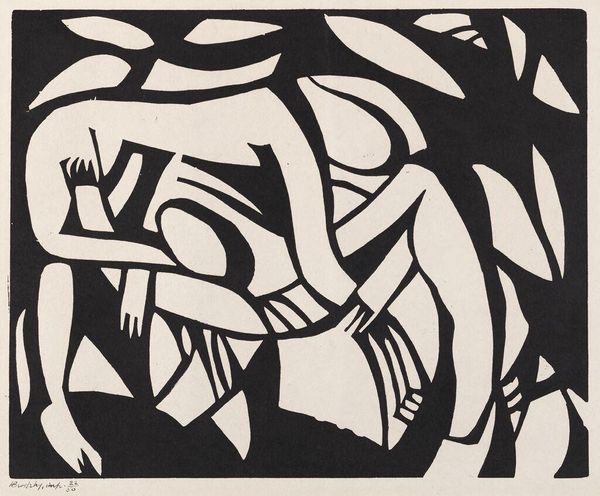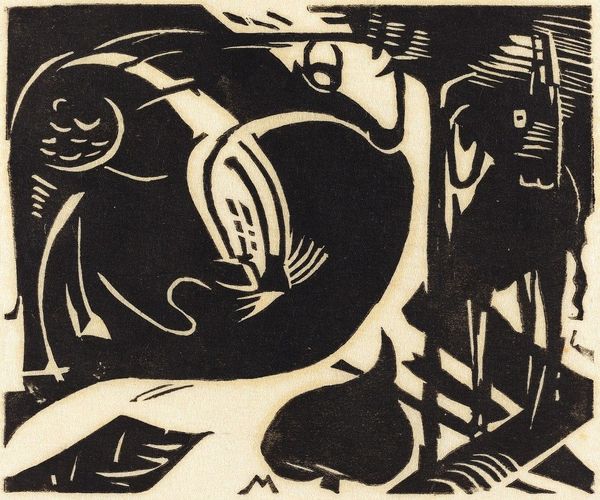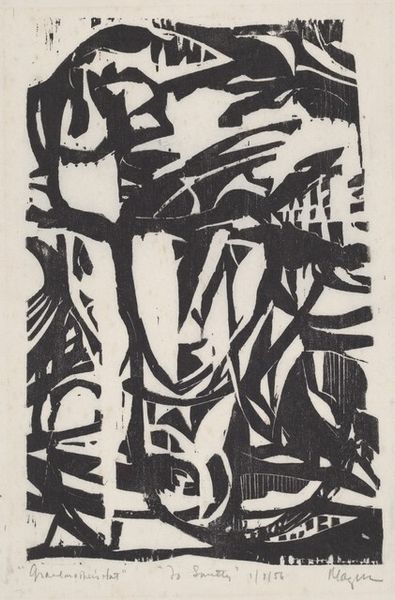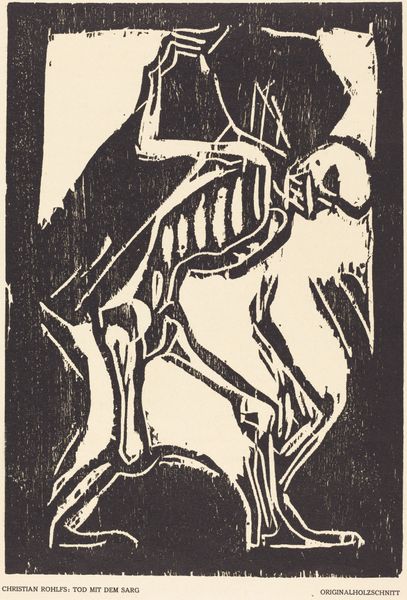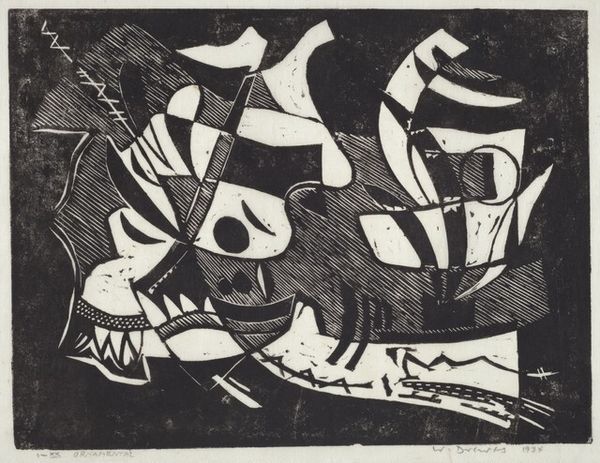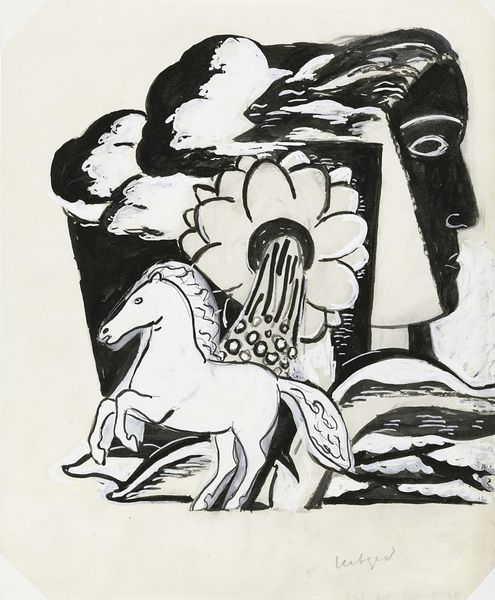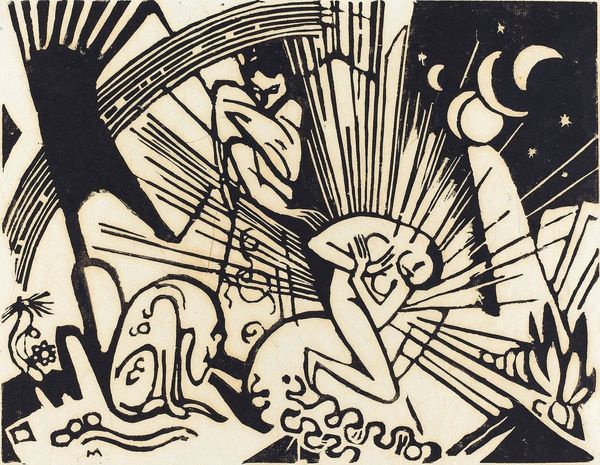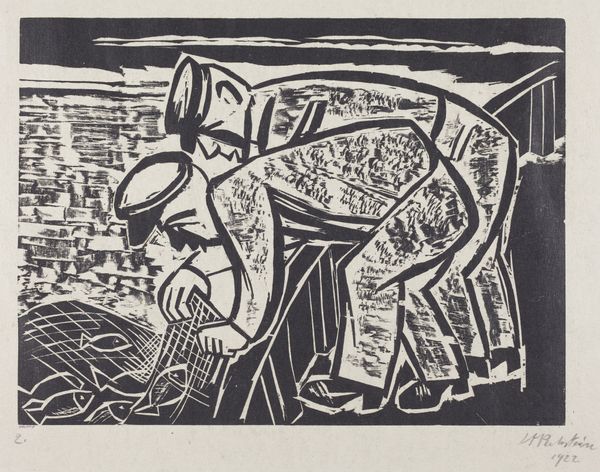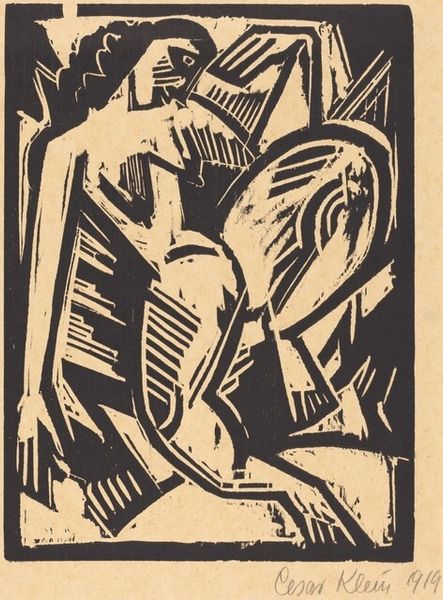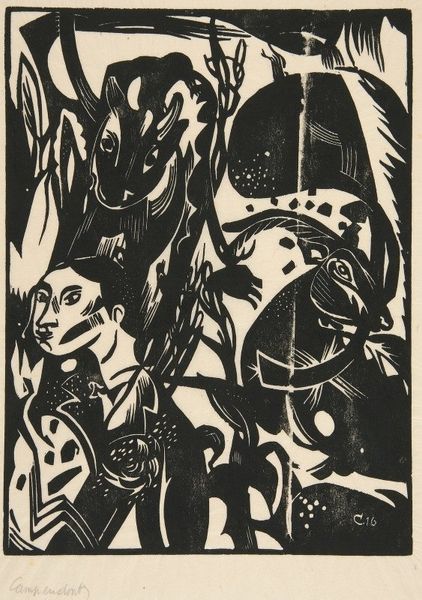
print, woodcut
# print
#
figuration
#
geometric
#
expressionism
#
woodcut
#
line
Copyright: Sandor Bortnyik,Fair Use
Bortnyik Sándor created Lovas in 1918 as a woodcut print. The stark black and white contrast is a key feature of this medium, and here, it enhances the artwork’s dramatic tension. Woodcut is an old technique, with examples found across the world. It involves carving an image into a block of wood, inking the surface, and then pressing it onto paper. It is a relief printing process, meaning that the areas that are cut away do not receive ink, creating the image through contrast. The bold, graphic style of Lovas, is partly determined by the nature of the material and the process. The grain of the wood and the force of the cutting tool give the lines a distinctive character. Woodcut was often seen as a more ‘common’ medium than painting or sculpture. It allowed for the creation of multiple copies, making art more accessible. In this period after the First World War, many artists like Bortnyik, took on printmaking as a way to reach a wider audience. This print, with its powerful imagery, speaks to the turbulent times in which it was made, reflecting the social and political issues that artists grappled with through material processes.
Comments
No comments
Be the first to comment and join the conversation on the ultimate creative platform.
